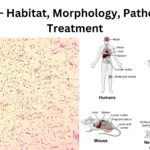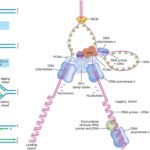IGCSE Biology 25 Views 1 Answers
Sourav PanLv 9November 14, 2024
Describe chemical digestion as the breakdown of large insoluble molecules into small soluble molecules
Describe chemical digestion as the breakdown of large insoluble molecules into small soluble molecules
Please login to save the post
Please login to submit an answer.
Sourav PanLv 9May 15, 2025
Chemical digestion is a crucial biological process that transforms large, insoluble food molecules into smaller, soluble forms that can be easily absorbed by the body. This process occurs primarily in the digestive system and involves a series of enzymatic reactions that break down complex macromolecules.
The Process of Chemical Digestion
- Ingestion: The process begins with the intake of food through the mouth, where mechanical digestion (chewing) prepares the food for chemical breakdown.
- Enzymatic Action: As food travels down the digestive tract, it encounters various enzymes that catalyze the breakdown of macromolecules:
- Carbohydrates: Enzymes like amylase (found in saliva and pancreatic juice) break down polysaccharides (e.g., starch) into disaccharides (e.g., maltose) and eventually into monosaccharides (e.g., glucose).
- Proteins: Proteins are broken down by proteases (e.g., pepsin in the stomach and trypsin in the small intestine), which cleave peptide bonds to produce smaller peptides and amino acids.
- Lipids: Lipases, produced by the pancreas, break down triglycerides into fatty acids and glycerol. Bile salts also play a critical role in emulsifying fats, making them more accessible to lipases.
- Absorption: Once food is broken down into small, soluble molecules, these nutrients are absorbed through the walls of the intestines into the bloodstream. This absorption primarily occurs in the small intestine, where a large surface area facilitates efficient nutrient uptake.
Importance of Chemical Digestion
- Nutrient Availability: Chemical digestion ensures that essential nutrients—carbohydrates, proteins, and fats—are available in forms that can be utilized by cells for energy, growth, and repair.
- Energy Production: The breakdown of these macromolecules is vital for producing ATP (adenosine triphosphate), the energy currency of cells.
- Metabolic Functions: The small molecules absorbed into the bloodstream can be further metabolized to support various physiological functions, including hormone production and immune responses.
0
0 likes
- Share on Facebook
- Share on Twitter
- Share on LinkedIn
0 found this helpful out of 0 votes
Helpful: 0%
Helpful: 0%
Was this page helpful?




